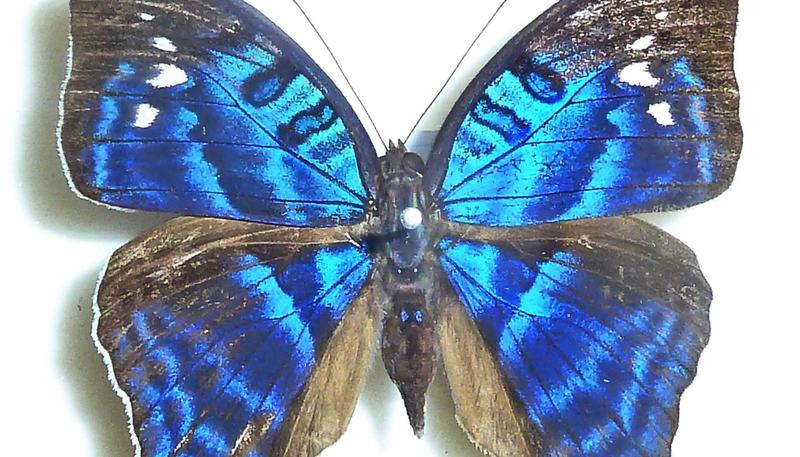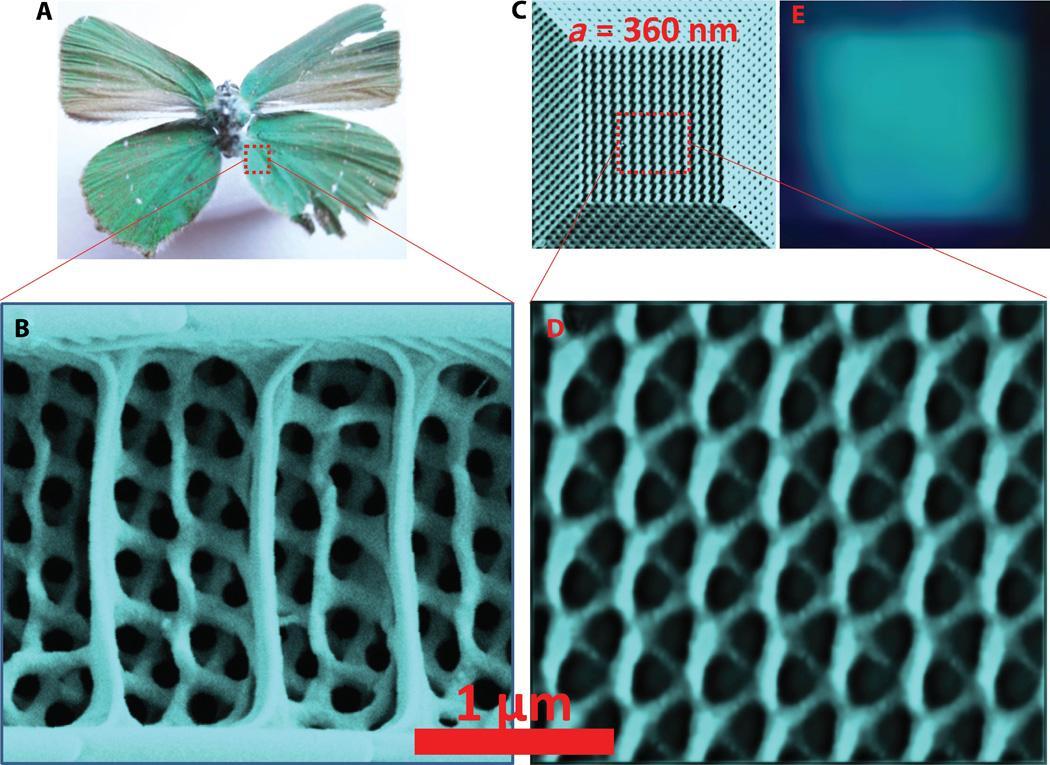
3D Printing Industry is currently seeking feedback on resin 3D printing. Send your insights now and take the Spotlight on Resin 3D Printing Survey.
Researchers at ETH Zurich have successfully 3D printed artificially colored nanostructures, drawing inspiration from the wings of a butterfly.
Native to tropical Africa, the wings of the Cynandra opis species are characterized by their vibrant colors. Rather than being pigment-based, however, these colors are structural, meaning they’re produced by intricate nanostructures on the surface of the wings. By deflecting and refracting visible light, the wings of the Cynandra opis amplify certain color components, resulting in a gemstone-esque shine.
The research group led by Andrew deMello, Professor of Biochemical Engineering, has successfully managed to recreate these naturally-occurring structures using a custom nanoprinting technique.
Xiaobao Cao, lead author of the study, explains, “The regular nanostructures on the wings of Cynandra opis were particularly well suited to reconstruction using 3D printing.”
Mimicking Cynandra opis via 3D nanoprinting
Looking under a microscope, the wings of the Cynandra opis butterfly comprise a two-dimensional grid of rods stacked on top of each other. The natural spacing between these rods is between 0.5 – 1 micrometers.
By 3D printing identical grids of rods but varying the spacing and height between 250 nanometers and 1.2 micrometers, the ETH researchers discovered that it was possible to generate virtually any color on the visible spectrum. Many of the hues achieved in the study aren’t even native to the wings of Cynandra opis. Additionally, the nanostructures were 3D printed in a variety of materials, including transparent polymers.
“This made it possible to illuminate the structure from behind to bring out the color,” explains Stavros Stavrakis, co-author of the study. “This is the first time we’ve managed to produce all the colors of the visible spectrum as structural colors in a translucent material.”

Where can the technology be applied?
In a bid to find an application for their technology, the ETH team 3D printed a tiny 2×2 micrometer image made of structural color pixels. The researchers believe that similar tiny images can eventually be used for authentication purposes on banknotes and other documents.
Since the colors can be 3D printed using transparent materials, it’s also possible to produce color filters for optical devices. This particular application would align well with deMello’s research group, which specializes in the development of microfluidic systems. The current work could help miniaturize systems for chemical and biological experiments.
The ETH team states that large-scale production of the color pixels is also possible. This could pave the way for a new kind of high-resolution color display, and perhaps even flexible screens.
Finally, the researchers even believe that the 3D printed structural colors could be an adequate alternative to the pigments used in printing and painting. Not only would they last longer due to resistance to UV-induced fading, but they’d also offer a better environmental footprint than the majority of today’s pigmentation options.
Further details of the study can be found in the paper titled ‘Replicating the Cynandra opis Butterfly’s Structural Color for Bioinspired Bigrating Color Filters’.
This isn’t the first time researchers have looked to copy mother nature in a bid to enable color-changing 3D printing applications. Just recently, researchers from Trinity College Dublin and the SFI Research Centre for Advanced Materials and BioEngineering Research (AMBER) developed a novel set of microscopic 3D printed gas sensors based on the color-changing feathers of a peacock. The 3D printed sensors are capable of changing colors in the presence of certain solvent vapors and can be used as a very visual manner of detecting hazardous pollutants.
Elsewhere, scientists from the Eindhoven University of Technology (TUE) broke new ground with the development of a novel 3D printable color-changing liquid crystal ink. The ink changes colors based on the angle it’s viewed at, making it iridescent like the exterior of a jewel beetle or the inside of a mollusk shell.
Subscribe to the 3D Printing Industry newsletter for the latest news in additive manufacturing. You can also stay connected by following us on Twitter, liking us on Facebook, and tuning into the 3D Printing Industry YouTube Channel.
Looking for a career in additive manufacturing? Visit 3D Printing Jobs for a selection of roles in the industry.
Featured image shows the male Cynandra opis butterfly. Photo via ETH Zurich.